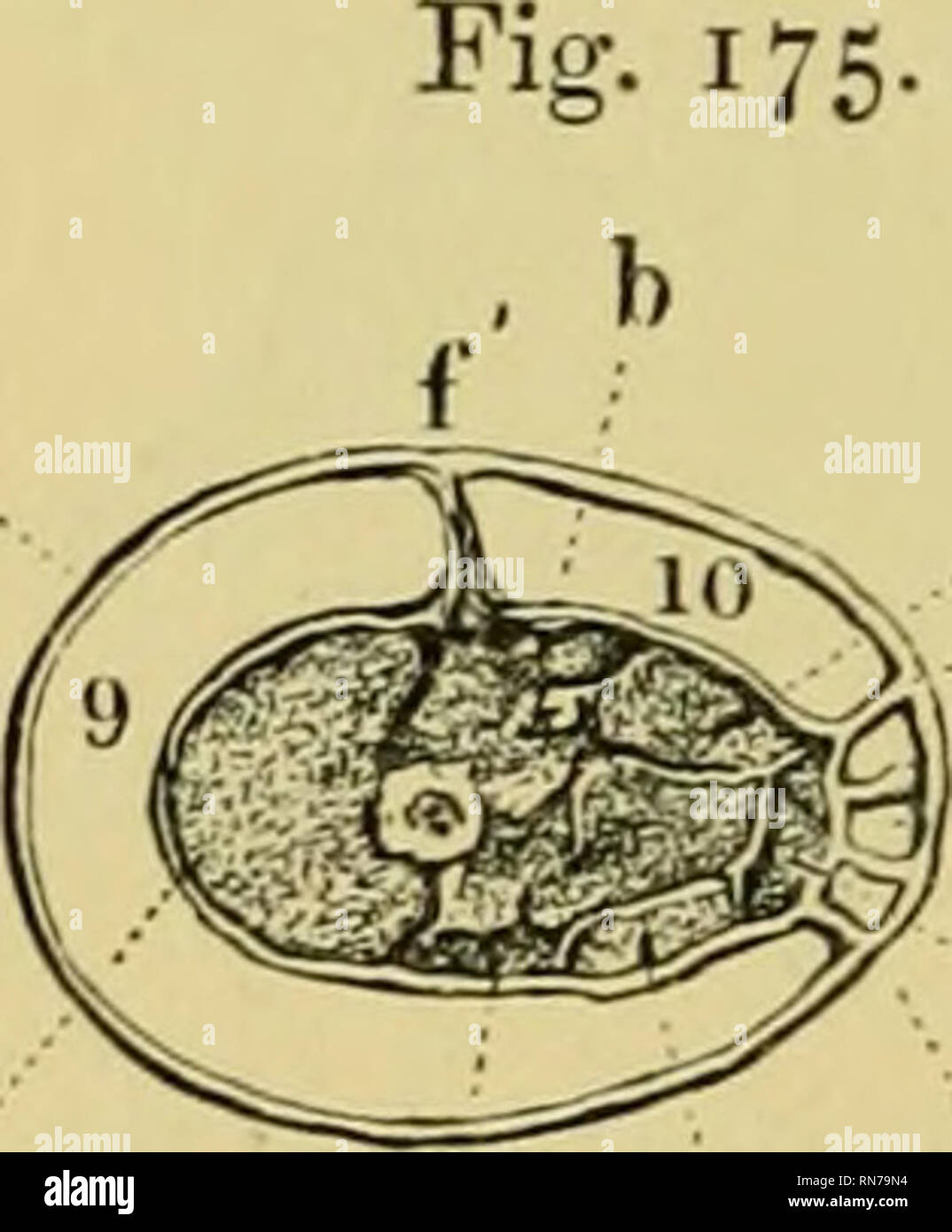. The anatomy of the frog. Frogs -- Anatomy; Amphibians -- Anatomy. 260 THE VASCULAR SYSTEM. H. (4) The tibio-femoral septum [Septum femoro-crurale) is a circular band, separating" the lymph-sacs of the thigh from the leg" sac. (5) The septa of the foot. At the ankle joint the skin is closely attached all round to the underlying- parts. Along- the outer border of the foot a septum is attached to the skin externally, and to the underlying" parts, especially the M. ahductor longus digitl jmu/i, internally. A similar but weaker band is attached along the outer border of the foot, e

Image details
Contributor:
Library Book Collection / Alamy Stock PhotoImage ID:
RN79N4File size:
7.1 MB (199.9 KB Compressed download)Releases:
Model - no | Property - noDo I need a release?Dimensions:
1437 x 1739 px | 24.3 x 29.4 cm | 9.6 x 11.6 inches | 150dpiMore information:
This image is a public domain image, which means either that copyright has expired in the image or the copyright holder has waived their copyright. Alamy charges you a fee for access to the high resolution copy of the image.
This image could have imperfections as it’s either historical or reportage.
. The anatomy of the frog. Frogs -- Anatomy; Amphibians -- Anatomy. 260 THE VASCULAR SYSTEM. H. (4) The tibio-femoral septum [Septum femoro-crurale) is a circular band, separating" the lymph-sacs of the thigh from the leg" sac. (5) The septa of the foot. At the ankle joint the skin is closely attached all round to the underlying- parts. Along- the outer border of the foot a septum is attached to the skin externally, and to the underlying" parts, especially the M. ahductor longus digitl jmu/i, internally. A similar but weaker band is attached along the outer border of the foot, especially to the 31. adductor diglti quinti. b. The lymph-sacs. (i) The femoral lymph-sac [Sacctis femoralis), (Figs. 169, 170, 171, 175 9) covers the lower and outer surfaces of the thigh ; it is bounded by the suj)erior femoral and inferior femoral sej^ta, and in front by the inguinal septum. (2) The suprafemoral lymph-sac [Saccus sujyrafemoralis), (Figs. 169, 171, 175 10) lies on the uj)per sur- face of the thigh, between the superior and intermediate femoral septa ; above it is bounded by the inguinal septum. (3) The interfemoral lymph-sac [Sacc7(s interfemoralis), (Figs. 169, 170, 175 11) is a narrow sac on the inner svirface of the thigh, between the inferior femoral septum and the intermediate femoral septum. It covers the M. rectus intérims minor, and is interrupted by numerous bands of tissue which pass from the surface of the muscle to the skin. It is, therefore, not a simple sac, but a very wide-meshed trabecular struature of connective-tissue. The sac is triang-ular in shape, with the base directed forwards at the inguinal septum. (4) The lymph-sac of the leg is a simple sac enclosing the whole leg, bounded above by the tibio-femoral septum, and below by the attachment of the skin to the ankle. (5) The lymph-sacs of the foot. On the dorsum of the foot the skin is free, and there is consequently a lymph-sac. On the plantar surface the skin is attached by numerous co